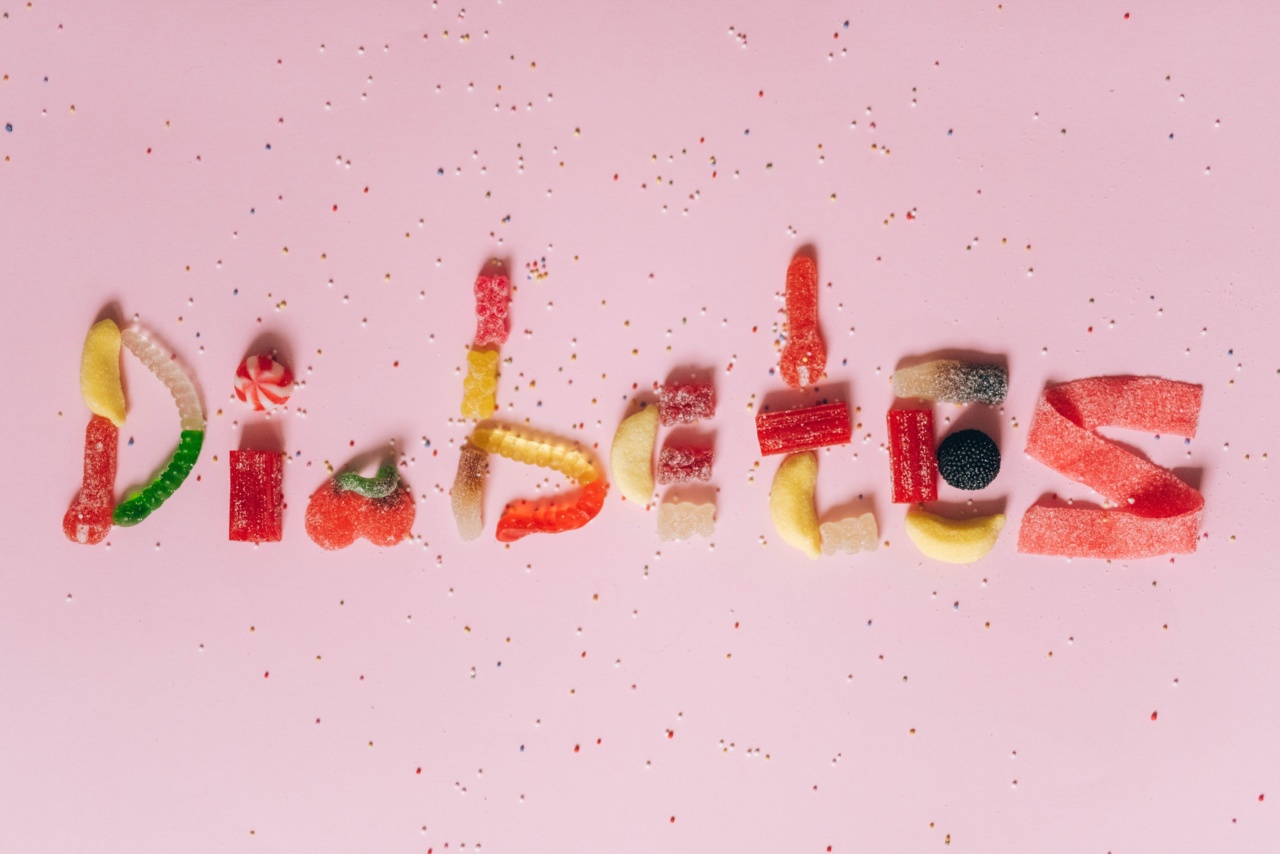Diabetes is a chronic condition that affects millions of individuals worldwide.
It is characterized by high blood sugar levels, either due to the body’s inability to produce insulin (Type 1 diabetes) or the body’s ineffective use of insulin (Type 2 diabetes). While genetics and lifestyle factors play a significant role in the development of diabetes, the consumption of sugary snacks has been identified as a leading cause of this metabolic disorder.
In this article, we will explore the hidden dangers of sugary snacks and their correlation with diabetes.
The Link Between Sugary Snacks and Diabetes
Sugar is a simple carbohydrate that provides a quick source of energy for our bodies. However, excessive consumption of sugary snacks can lead to a range of health issues, including diabetes.
When we consume foods high in sugar, our blood sugar levels spike rapidly, triggering the pancreas to produce insulin. Over time, this constant demand for insulin can overwhelm the pancreas, leading to insulin resistance, a hallmark of Type 2 diabetes.
Sugary Snacks and Insulin Resistance
Insulin resistance occurs when our cells become less responsive to the insulin produced by the pancreas. This means that glucose cannot effectively enter our cells, leading to persistently high blood sugar levels.
Consuming sugary snacks regularly can contribute to the development of insulin resistance, making us more susceptible to diabetes.
The Role of Added Sugars
While natural sugars found in fruits and dairy products can be part of a healthy diet, it is the added sugars in processed foods and sugary snacks that pose the greatest risk.
Added sugars include sucrose, high fructose corn syrup, and other sweeteners used to enhance flavor. These sugars are often hidden in packaged snacks, sodas, desserts, and even seemingly healthy products such as granola bars and flavored yogurt. Regular consumption of these foods can significantly increase the risk of diabetes.
The Impact of Sugary Snacks on Blood Glucose Levels
When we consume sugary snacks, our blood glucose levels rise rapidly. This triggers a surge in insulin production to facilitate the movement of glucose into our cells.
However, excessive consumption of sugary snacks can overwhelm our insulin production, leading to persistently high blood sugar levels. Over time, this can contribute to the development of insulin resistance and, eventually, Type 2 diabetes.
The Risk of Obesity
Sugary snacks not only contribute to diabetes but also increase the risk of obesity. Many sugary snacks are calorie-dense and low in essential nutrients. These empty calories provide no satiety and can lead to overeating, resulting in weight gain.
Obesity is a significant risk factor for diabetes, as excess body fat can impair insulin sensitivity and promote chronic inflammation. By limiting our intake of sugary snacks, we can reduce the risk of both obesity and diabetes.
The Role of Sugar Addiction
Sugar has been found to be highly addictive, stimulating the release of dopamine in our brain’s reward center. This addictive nature of sugar can lead to cravings and an inability to control consumption.
Regularly indulging in sugary snacks and desserts can create a cycle of cravings and increased consumption, contributing to the development of diabetes and other metabolic disorders.
Hidden Sugars in Processed Foods
Sugary snacks are not limited to candies and desserts; they can also be found in many processed foods. Food manufacturers often add hidden sugars to enhance taste and prolong shelf life.
These hidden sugars may be listed under different names on food labels, including dextrose, maltose, and fruit juice concentrate. By carefully reading food labels and being aware of these hidden sugars, we can make more informed choices and reduce our risk of diabetes.
The Importance of a Balanced Diet
A balanced diet that limits the consumption of sugary snacks is essential for preventing diabetes and maintaining overall health. Instead of reaching for sugary snacks, opt for whole foods that are low in added sugars and high in essential nutrients.
Fresh fruits, vegetables, lean proteins, and whole grains should form the foundation of a diabetes-friendly diet. By making these dietary changes, we can reduce our risk of diabetes and improve our overall well-being.
The Role of Education and Policy Changes
Addressing the dangers of sugary snacks requires a multi-faceted approach. Education plays a crucial role in raising awareness about the risks associated with excessive sugar consumption and empowering individuals to make healthier choices.
Additionally, policy changes can play a significant role in reducing the availability and marketing of sugary snacks. Implementing sugar taxes, increasing nutrition labels’ transparency, and promoting healthier alternatives in schools and workplaces are just a few ways to combat the sugar epidemic.
The Bottom Line
Sugary snacks pose a hidden danger when it comes to diabetes. Excessive consumption of sugary snacks can lead to insulin resistance, elevated blood sugar levels, and an increased risk of developing Type 2 diabetes.
While enjoying an occasional sweet treat is unlikely to cause harm, it is essential to prioritize a balanced diet that minimizes the intake of added sugars. By making healthier choices and being mindful of hidden sugars, we can protect ourselves from the detrimental effects of sugary snacks and reduce the risk of diabetes.





























